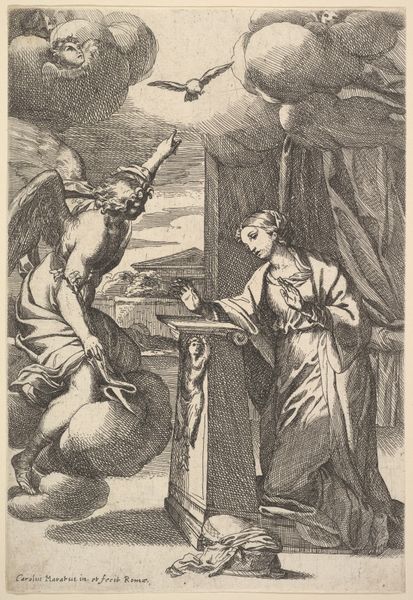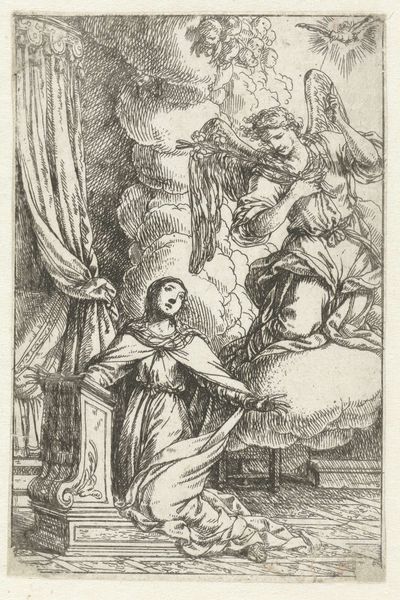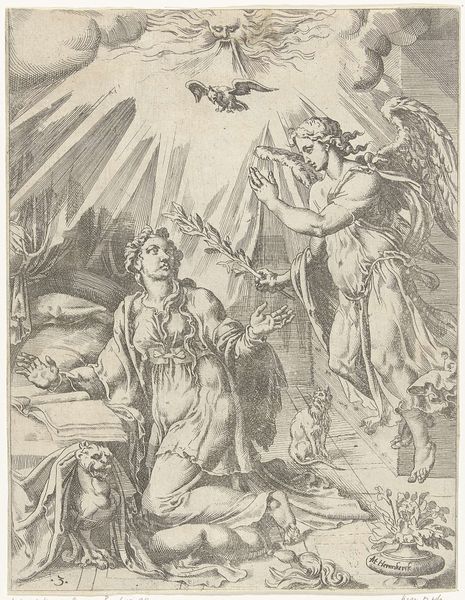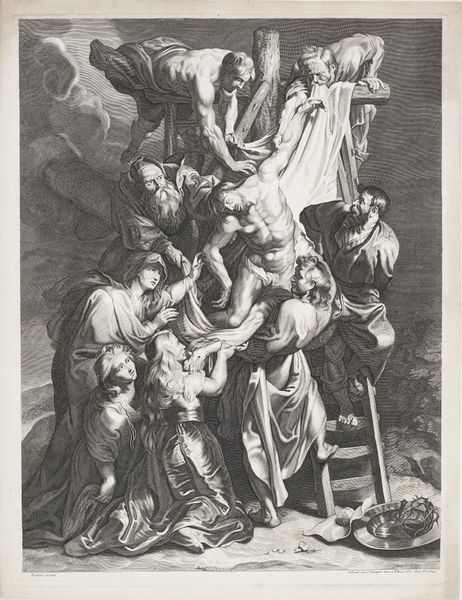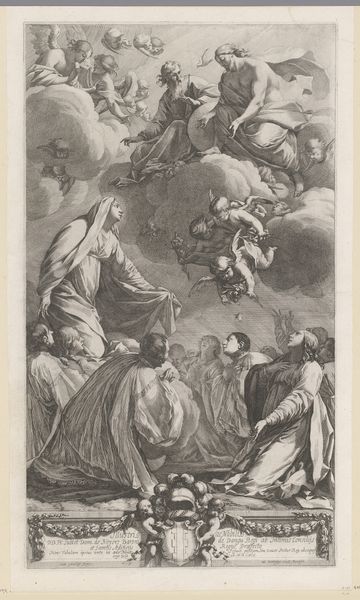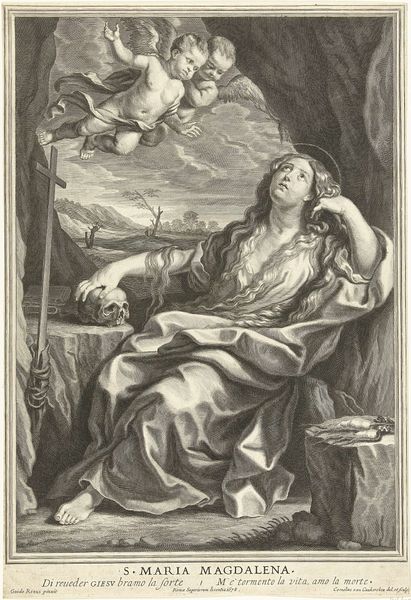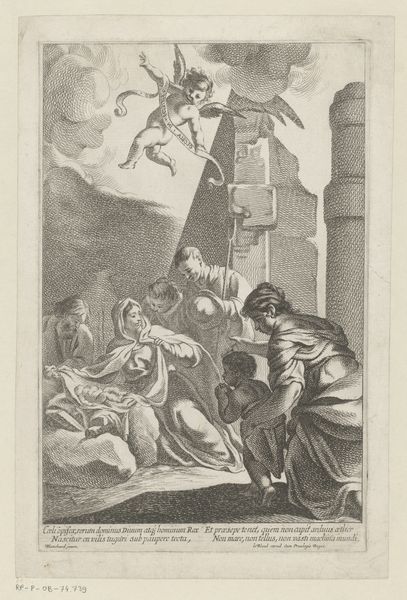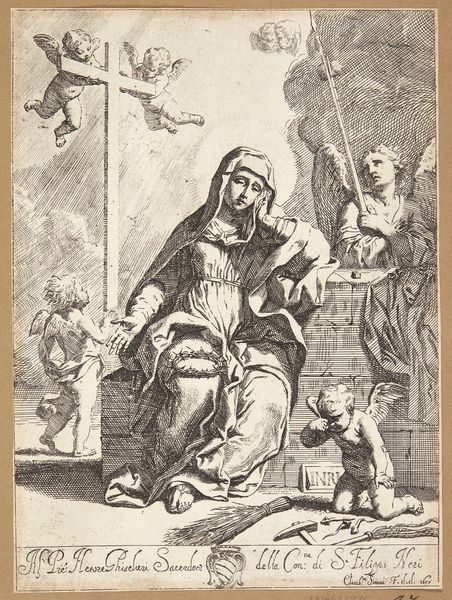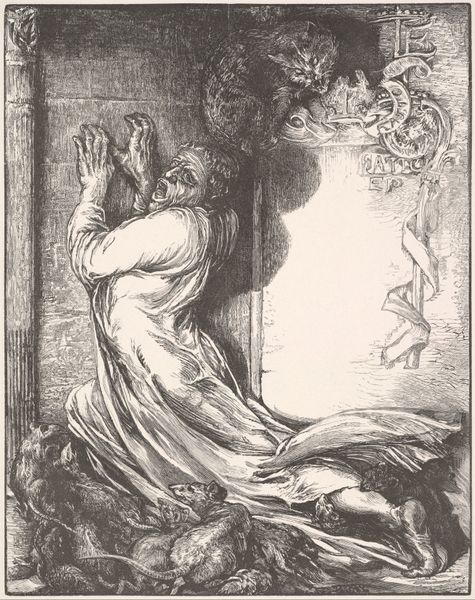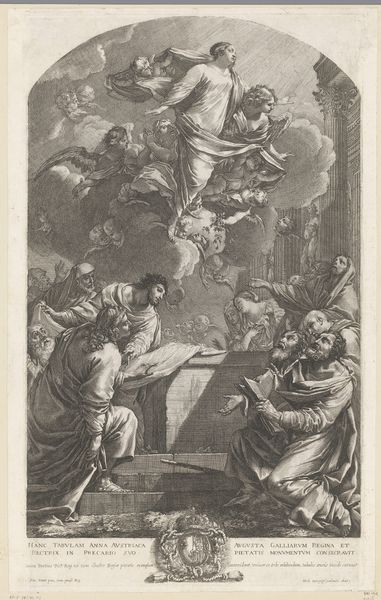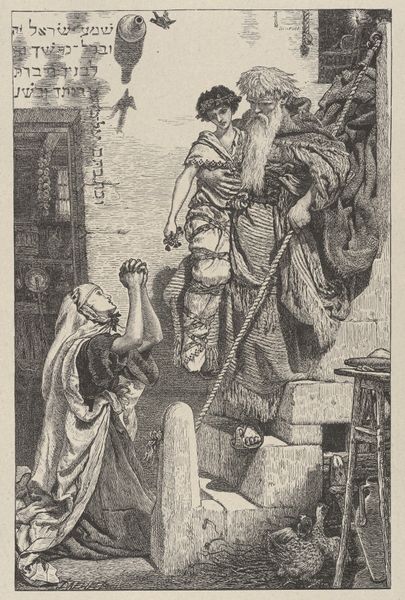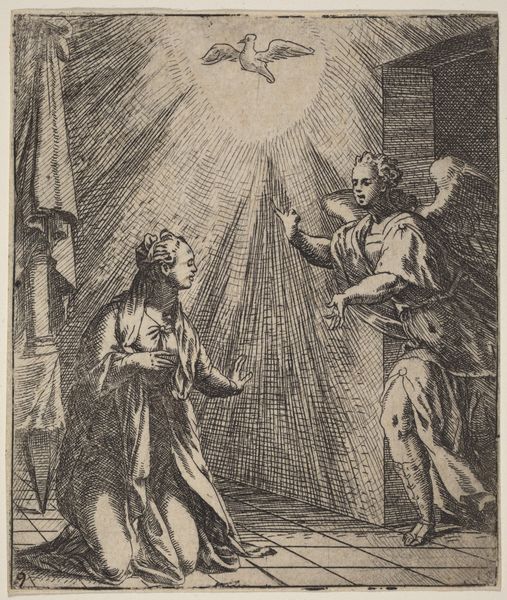
The Ivory Carver, from "Illustrated London News" 1857
0:00
0:00
Dimensions: Image: 9 3/4 × 7 11/16 in. (24.8 × 19.5 cm) Sheet: 10 3/16 in. × 8 in. (25.9 × 20.3 cm)
Copyright: Public Domain
Curator: Welcome. We are looking at "The Ivory Carver" from the Illustrated London News, created in 1857 by William James Linton, currently residing here at the Metropolitan Museum of Art. It's an engraving, printed from a woodblock, part of a wider series celebrating crafts and labor. Editor: It’s quite dramatic, wouldn’t you say? The stark contrast between light and shadow immediately draws the eye, creating a spiritual, almost theatrical scene. The figure on his knees, arms outstretched, looks absolutely transfixed. Curator: Indeed. What is particularly interesting is the medium itself. The mass-produced print allowed the image, and the ideals it represented—hard work, artistry, even religious devotion—to circulate widely among the Victorian public. Editor: Let's not forget the angelic figures hovering above. Are they inspiration, divine intervention, or simply a symbol of the heightened emotional state? The composition almost reads as a classic Madonna and child tableau flipped onto the artistic act. Curator: Possibly both. Note also the tools scattered around. Linton meticulously depicts them—chisels, knives, even what appears to be discarded ivory. This detailed rendering elevates the everyday, reminding us of the skill and effort behind every object we use, and points to the global trade of ivory production Editor: The texture Linton achieves with the engraving is remarkable, considering its graphic nature. You can almost feel the coolness of the ivory, the roughness of the workbench. Curator: And the social context cannot be overstated. Here we have an explicit reference to the value, or perhaps, even, the inherent tension, associated with labor at a time when industrial production was fundamentally reshaping such activities and networks of commerce. The romanticized portrayal of manual labor is powerful in itself, the ivory standing for so much more. Editor: A reminder of both skill and empire. This work beautifully demonstrates how formal artistic decisions intertwine with broader historical currents, don’t you think? Curator: Yes, quite right. It pushes us to acknowledge art’s place both within aesthetic interpretation and material construction, revealing cultural ideals surrounding it. Editor: Absolutely. "The Ivory Carver" isn't simply a picture, but a complex statement on labor, faith, and the making of art itself, captured with intense skill and a distinct visual flair.
Comments
No comments
Be the first to comment and join the conversation on the ultimate creative platform.
